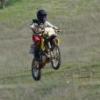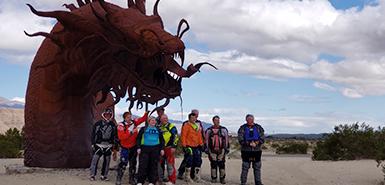-
Content Count
3812 -
Joined
-
Last visited
-
Days Won
70
Content Type
Profiles
Forums
Calendar
Everything posted by Goofy Footer
-

Isle of Man TT - Time Magazine
Goofy Footer replied to Goofy Footer's topic in Articles, Movies, Videos, DS/ ADV Related
Surely you must have some high quality PMB photos to share?? A man with an eye as exquisite as yours must have encapsulated such a great experience! -

Isle of Man TT - Time Magazine
Goofy Footer replied to Goofy Footer's topic in Articles, Movies, Videos, DS/ ADV Related
Hopefully Butternut didn’t Squash! any pics of the bike? -

Lawrence Hacking - Mile by Mile (Dakar 10min Doc)
Goofy Footer posted a topic in Articles, Movies, Videos, DS/ ADV Related
-

Lawrence Hacking - Mile by Mile (Dakar 10min Doc)
Goofy Footer replied to Goofy Footer's topic in Articles, Movies, Videos, DS/ ADV Related
Makes me think of @Mr.JAJA’s “But did you die” sense of adventure @Zubb @bfar33 @tntmo @robertaccio @dirt dame & @KTMrad should like this racing history @97xr400r @Reximus @J5ive @350thumper check out that Honda XR650R -

How KTM came to rule the off road scene
Goofy Footer replied to tntmo's topic in Articles, Movies, Videos, DS/ ADV Related
Cycle News front cover! @tntmo @robertaccio @Wintyfresh @Pokey151 @tubebender should I do a proper post ok this historic bike? I’ve been doing some moto history research on it. -

In-koh-pah / Stagecoach
Goofy Footer replied to 350thumper's topic in Informal Local Rides & Who's Going Riding!
And well, maybe be cautious about riding the desert in the heat of summer - the high was 102F that day. -

Tres hermanos closed
Goofy Footer replied to kato's topic in Baja Info, Upcoming Rides, Ride Reports, Photos, etc.
Sad. It’s not the same as when you first started going down. (Still awesome tho!) Where and what have you been riding @kkug ?! Can you attend the First Aid Presentation on May 31? It would be great to see you and @Covered in Dust -

Tres hermanos closed
Goofy Footer replied to kato's topic in Baja Info, Upcoming Rides, Ride Reports, Photos, etc.
Shitty But, I’d poop THERE ^ anytime. @mufflerbearings posted the news on ADV -

CANCELLED - McCain Valley 5/14 Noob Friendly!
Goofy Footer replied to Biker Jones's topic in Informal Local Rides & Who's Going Riding!
If I may suggest, put Noob Friendly in the thread title. People love noob friendly rides! Also beware 5/14 is Mother’s Day -

Bear Valley OHV Just re-opened to 4 wheelers
Goofy Footer replied to Biker Jones's topic in Trail closures and conditions for Southern California
One of the SDAR principles is Tread Lightly Mud pits dry out and become nasty ruts for other vehicles. This can happen on single track too so TL is crucial. Mtn bikers also talk about letting trails dry out before riding them. If only the Tread Lightly sentiment was more widespread. -

How KTM came to rule the off road scene
Goofy Footer replied to tntmo's topic in Articles, Movies, Videos, DS/ ADV Related
The 1997 Yamaha YZM400 was a winner! Italy’s own Andrea Bartolini was the YZM400 rider who won the Italian Gran Prix And stateside, AMA Hall of Famer Doug Henry won the final round of 1997 Supercross at Sam Boyd Stadium in Las Vegas on the YZM - the first modern four stroke to win. He beat Jeremy McGrath that race! -

How KTM came to rule the off road scene
Goofy Footer replied to tntmo's topic in Articles, Movies, Videos, DS/ ADV Related
a YZM400 beat the Husabergs and won the 1997 Italian World Cup / Grand Prix !! -

How KTM came to rule the off road scene
Goofy Footer replied to tntmo's topic in Articles, Movies, Videos, DS/ ADV Related
What year would you say sparked the modern Euro 4 stroke motocross wave? 1999 brought the Yamaha YZ400 to the US if I recall correctly -

How KTM came to rule the off road scene
Goofy Footer replied to tntmo's topic in Articles, Movies, Videos, DS/ ADV Related
Don’t forget your 13mm! -
Congrats on the new bike! What area of town are you in? Might help with coordinating rides Plenty of seat options for that bike - same as the DRZ400 Excellent dualsport machine!
-
With age comes pragmatism, motrin and yelling at people to get off your lawn
-
@Zubb and @spazegun2213 PM @KTMrad or @shutterrev for the address and RSVP
-

How KTM came to rule the off road scene
Goofy Footer replied to tntmo's topic in Articles, Movies, Videos, DS/ ADV Related
wow ktm rotax, never knew about this. stealing motors since the 80s! -

How KTM came to rule the off road scene
Goofy Footer replied to tntmo's topic in Articles, Movies, Videos, DS/ ADV Related
The elephant in the room: Liquid Cooling and Marketing killed the last great 4 stroke trail bikes: Honda XR Suzuki DR (Long Live the DR650) Yamaha IT / TTR ! @tntmo @tntbromo @Reximus @350thumper @J5ive @Reximus @Birdi -

How KTM came to rule the off road scene
Goofy Footer replied to tntmo's topic in Articles, Movies, Videos, DS/ ADV Related
Was KTM buying Husaberg their big entry into the 4 stroke world? I don’t know that I’ve ever seen an older KTM 4 stroke than the late 90s - early 2000s LC4 rattle your cavity fillings out, left side kicker bikes -

How KTM came to rule the off road scene
Goofy Footer replied to tntmo's topic in Articles, Movies, Videos, DS/ ADV Related
Also while it’s no longer produced New, the KDX 200 & KDX 220 are so good and last such a long time that even the early 2000s models are still running! Still highly capable trail machines today. @dirt dame @mufflerbearings @socalhodaka @dsfox -

How KTM came to rule the off road scene
Goofy Footer replied to tntmo's topic in Articles, Movies, Videos, DS/ ADV Related
Correct, Yamaha has never stopped producing 2 strokes and recently unveiled the YZ250X with wide ratio gearbox and 18” rear tire. I have seen these in the off road and desert scene. Panthera Estart kits are available, 300 big bores are plentiful and of course, the new 500 kit is out there! -
- 1 reply
-
- 1
-

-
@Mr.JAJA where is that wrecking yard? @tntmo’s new Kawi Dream bike has a parts trailer for hauling those goods home
-
@tntmo can you make it? If so bring the Kawi Dream! @Zubb are you in town or Idaho? @DSM8 hope you can make it @PaulyPickles needs to come @J5ive come and be social bring your crutches! @Mr.JAJA hope you can make it, would be nice to see you @MacDuncan this one is close to you, come by @shutterrev thanks for hosting! @Wintyfresh near your ‘hood hope to see you @KTMrad thanks for organizing this @SlowpokeShorty this is what you asked for! See you there!




